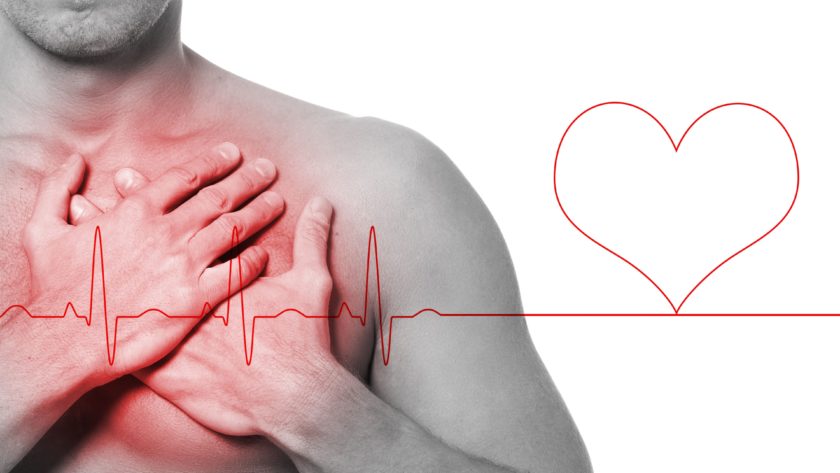
After your heart attack or some other “cardiac event”, such as a coronary artery bypass graft and/or stent placement, you may have received conflicting advice as to what level of activity is acceptable. Some of the things you may have heard are:
- Don’t lift anything over 5 lbs.
- Don’t lift anything over 10 lbs. “for a while”.
- Don’t lift anything for a week.
- Don’t drive more than 30 minutes.
- Don’t “get exhausted” for a month.
- Don’t exercise for a few weeks.
- Don’t lift over 5 lbs. for a period of time — or ever.
- Go back to whatever you were doing before.
These guidelines can be confusing and promote anxiety and inactivity. Physicians generally prescribe aerobic/endurance exercise, such as walking, to strengthen your cardiorespiratory system, but in order to return to activities of daily living (ADLs), resistance training is necessary to accomplish everyday tasks, such as:
- Mowing the lawn
- Vacuuming
- Carrying your children, groceries, or suitcase
- Loading and unloading the trunk of a car/truck
- Bending over to pick up the newspaper or toys off the floor
- Lifting your grandchildren
- Placing or removing items from a high shelf
- Closing the trunk of a car or van
- Opening a heavy door (e.g., door of a car, building, refrigerator, freezer, or dishwasher)
Resistance training enables you to perform these daily tasks safely, independently and more efficiently. By having a stronger musculoskeletal system, you decrease the cardiac demands of daily activities and increase your endurance capacity for other activities. Strength training has also been shown to maintain and build stronger bones as well as slow or prevent bone loss. A strong structure will reduce your risk for developing other debilitating diseases (e.g., osteoporosis) and ultimately help you live a longer, stronger and happier life.
 Muscular strength and endurance are important to prevent falls and safely return to vocational and recreational activities as well as activities of daily living. Most people need to do some type of lifting, carrying, or pushing in their daily routine. Your body has nine (9) fundamental human movement patterns. The foundation of your workouts should develop these movements:
Muscular strength and endurance are important to prevent falls and safely return to vocational and recreational activities as well as activities of daily living. Most people need to do some type of lifting, carrying, or pushing in their daily routine. Your body has nine (9) fundamental human movement patterns. The foundation of your workouts should develop these movements:
- Squatting
- Lunging
- Pushing
- Pressing (pushing overhead)
- Pulling
- Twisting (rotational and anti-rotational movements)
- Bending (hinging your hips)
- Carrying
- Moving on foot (gait)
Functional Exercises
Strength training does not necessarily mean pumping iron. “Bodyweight” exercises are just as effective and help you build a more functional body and include exercises, such as:
- Squats
- Lunges and variations of forward, reverse, lateral, curtsy lunges
- Push-ups
- Modified push-ups (e.g., wall, counter, table, or chair push-ups)
- Pull-ups – the ultimate bodyweight exercise! Pull-ups work your arms, shoulders, back, core, and all the stabilizer muscles in between.
- Reverse push-ups (a.k.a. inverted bodyweight rows) – This exercise is a actually a ‘modified pull-up’ and a great way to build your way up to eventually performing a pull-up. Best of all, the reverse push-up can be modified to accommodate the true pull-up beginner to the elite athlete.
- Reverse sit-ups
Bodyweight exercises focus on complex muscle ‘movements’ and require moving and supporting your own body through various planes using multiple joints and muscles. They closely mimic how your body moves to perform ADLs and increase strength, balance and coordination. As you get stronger, you can add external weight to the exercise, such as dumbbells, kettlebells or weighted balls.
Improve How You Move
 Contrary to multi-joint exercises, single-joint exercises, such as bicep curls and leg extensions, isolating a single muscle group and one joint and are typically non-weight bearing — which is not how your body moves in real life. Also, if you perform your resistance training seated on a machine, you are not engaging the muscles and stabilizing muscles that you need to build your core, improve agility, and increase your balance and coordination — all the elements that enable you to move smoothly, quickly and efficiently on foot.
Contrary to multi-joint exercises, single-joint exercises, such as bicep curls and leg extensions, isolating a single muscle group and one joint and are typically non-weight bearing — which is not how your body moves in real life. Also, if you perform your resistance training seated on a machine, you are not engaging the muscles and stabilizing muscles that you need to build your core, improve agility, and increase your balance and coordination — all the elements that enable you to move smoothly, quickly and efficiently on foot.
Form Matters
Focus on your form to prevent potential injuries. Proper breathing and lifting techniques are essential to every muscle-building routine. Master your form first. That means you may need to modify the exercise at the beginning. If you’re not strong enough to do a full squat at first, start out doing partial squats to ensure your form is correct, then stop when you get tired. Remember…fatigue will cause you to lose your form, so don’t continue your reps past the point of fatigue!
![]() Fit Tip: You can begin resistance training after ONE MONTH of traditional cardiac rehab. Strength workouts should start out light and progress gradually over time. After a sternotomy, heavy upper body strength training is not advised for at least 8-12 weeks post-surgery. Be sure there is no movement in your sternum (i.e., pain, cracking, popping, or feelings of pulling on the incision). Your resistance training routine should progress at a gradual and consistent pace with the guidance of a clinical exercise physiologist and follow cardiac rehabilitation principles of training.
Fit Tip: You can begin resistance training after ONE MONTH of traditional cardiac rehab. Strength workouts should start out light and progress gradually over time. After a sternotomy, heavy upper body strength training is not advised for at least 8-12 weeks post-surgery. Be sure there is no movement in your sternum (i.e., pain, cracking, popping, or feelings of pulling on the incision). Your resistance training routine should progress at a gradual and consistent pace with the guidance of a clinical exercise physiologist and follow cardiac rehabilitation principles of training.





